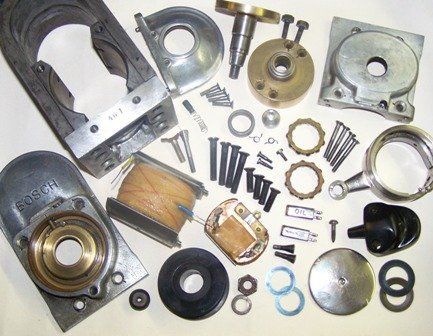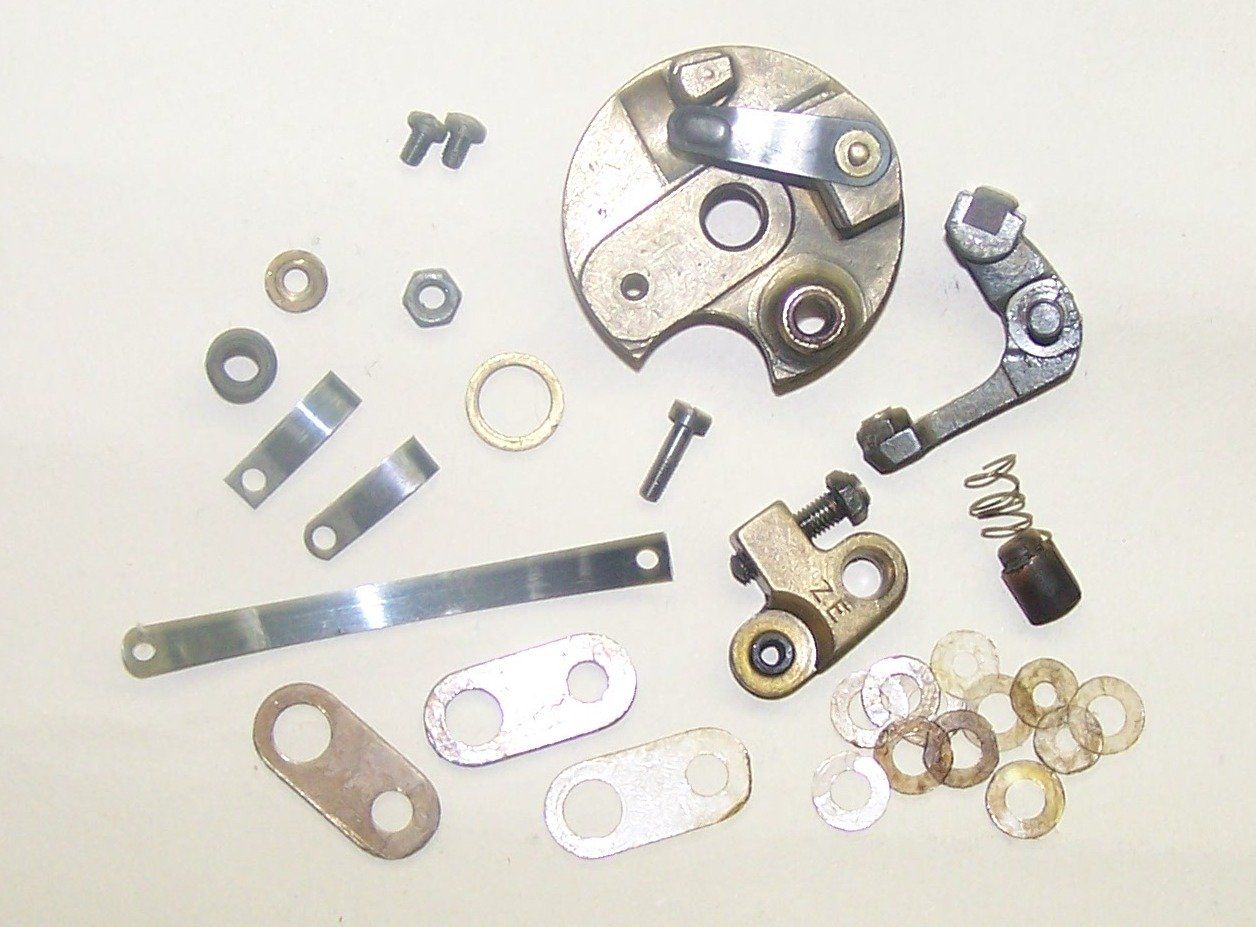Magnetos
Magnetos
The most common reason customers give for bringing us a magneto is that ‘it starts OK when cold but not when hot’. If this is the case – or indeed, if there is no spark – magneto repairs start with a complete strip down followed by thorough cleaning. All parts are then carefully inspected and tested. We don’t automatically replace everything – some parts are rare and not easily obtainable, the last thing we want to do is throw away perfectly good usable components and then use up valuable stock parts!

Bosch ZE1 magneto in parts - what's missing?
Without a doubt, the coil is the most important part to get right. For this reason, rewinding is performed in-house so that quality control can be maintained. Our equipment includes four different
coil winding machines, each best suited to a different type of coil winding operation. Different magnetos need different sizes of wire and different numbers of layers and turns. Each layer needs to be interleaved with insulation and the finished winding is then taped up and encapsulated in an insulating varnish. We use a high flash, solventless polyester resin which is applied using a heat/vacuum/pressure/bake cycle on our custom-built
VPI bench. This process is essential for long term reliability. Some ‘restorers’ still use the old fashioned ‘dipping’ method – the end result looks similar but is nowhere near as effective. When the coil comes out of the oven it is then tested for spark generation efficiency and insulation while still hot on our High Voltage Spark Tester.
If a mica condenser is fitted, it is tested for insulation breakdown and capacitance at both cold and hot temperatures as shown here. More often than not, mica condensers are found to be perfectly satisfactory even if they are around 100 years old! In these situations the original condenser is reused. Sadly, the same cannot be said for the later paper dielectric condensers. Even if ‘New Old Stock’ these condensers are probably decades old and will fail. We don’t even bother to test these - they are automatically replaced with a modern capacitor specifically designed to withstand high voltage pulses - more details are available here.
Potentially suspect parts such as the slip ring and HT pickups are checked on our High Voltage Insulation Tester
to highlight any tracking problems. Cam ring, contact breaker points, brushes, bearings, oil seals etc are all checked for wear. If any part is found to be faulty or worn out, it will be refurbished or replaced. If this cannot be done, we may need to adapt something similar or, in some cases, manufacture a new part – we have full in-house workshop facilities. Usually, parts like screws, nuts, clips, covers etc are de-burred, cleaned, painted in some cases and then reused. Sometimes stainless steel screws, clips and cable adjusters are requested so, if you are looking for a concours job, talk to us about the options!
Re-assembly of the magneto should be straightforward if original parts are reused but if anything is changed then careful attention must be paid to shimming the armature to ensure correct end float. Also when reassembling, the internal timing of the magneto needs to be checked. This should be relatively easy for singles and twins but four-cylinder and upward magnetos use a gear train between the armature and distributor shaft which needs to be correctly timed. This operation is very easy to carry out when using our Magneto Static Timing Light.

So, what was missing? The points! How many parts make up a complete magneto?
Once assembled the magneto goes on the Magnetiser
and is then placed on the Octopus Electrical Test Bench
for testing. This includes running at various speeds to ensure correct operation throughout the expected rev range. The magneto is left running for some time to allow it to reach normal operating temperatures. It is then tested throughout the rev range again. A final check on the points gap again and the finished magneto is then ready for fitting on the vehicle where it will deliver years of reliable service.
The Magneto Guys
Telephone: +44 (0)1323 840203
